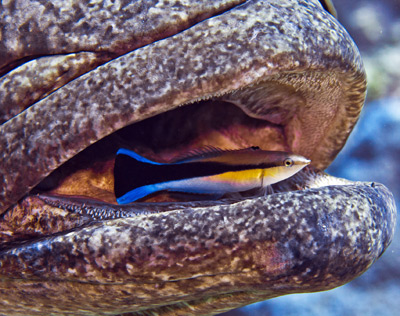
Cleaner Wrasse (Labroides dimidiatus) offering some “dental care” to a potato grouper (Epinephelus tukula)
The introduction of Labroides spp. cleaner wrasses to marine aquarium systems is generally ill-advised. Though some hobbyists report success in keeping these obligate cleaners long term, the vast majority of specimens entering the market are doomed to perish prematurely from starvation. Nonetheless, despite their abysmal captive survival rate, people continue to buy these wrasses, likely owing to some persistent misconceptions surrounding them.
Among these myths are:
1. If the wrasse can’t get enough to eat by cleaning, it will learn to accept other foods First off, there’s no if about it—a cleaner wrasse kept in a home aquarium cannot sustain itself long term by cleaning its tankmates. After all, in your average home system, there are going to be very few clients to service and they likely won’t have much of a parasite load or dead tissue to offer. So, if the wrasse doesn’t learn to recognize aquarium fare as edible, it’s destined to starve MORE









0 Comments